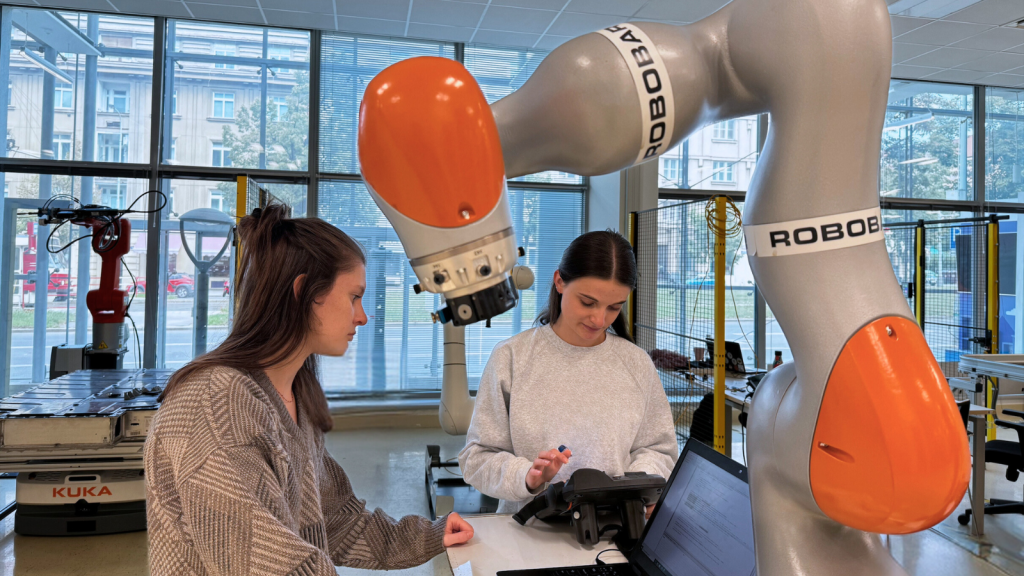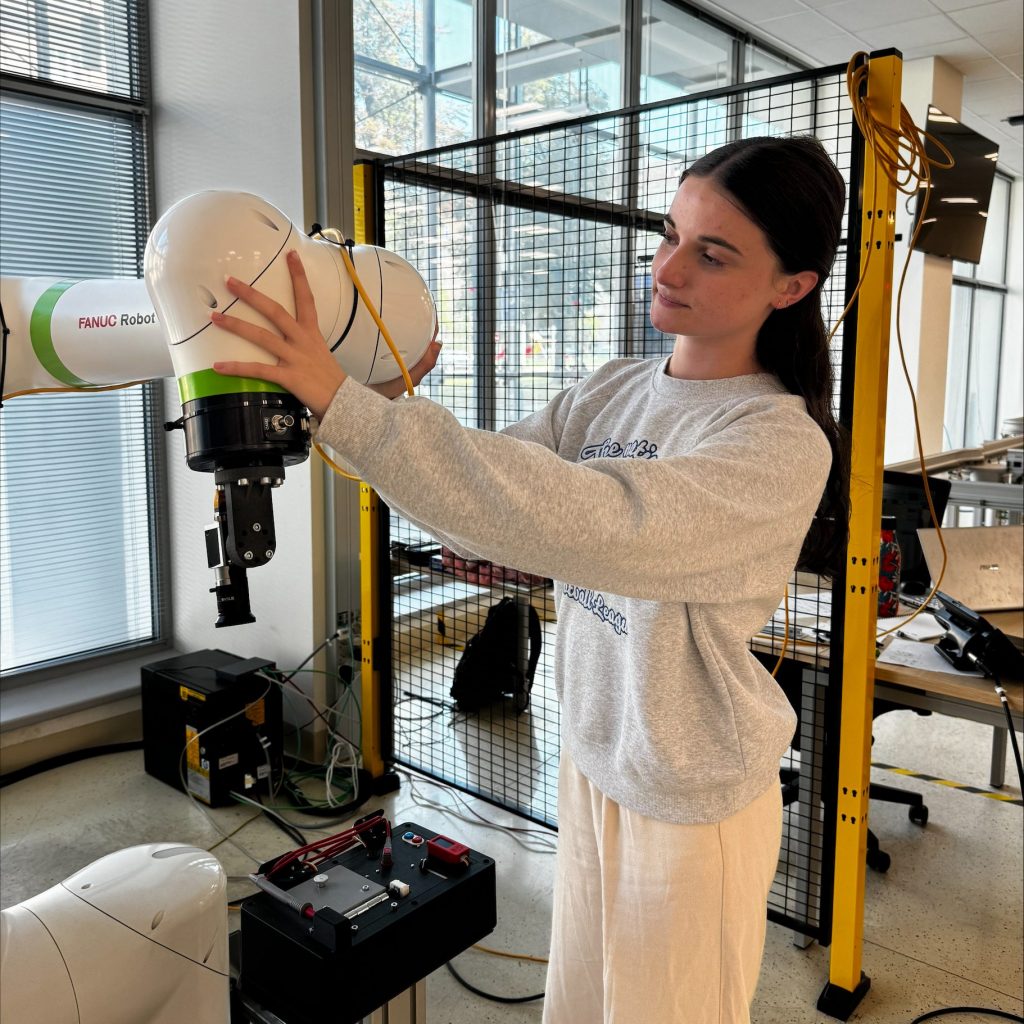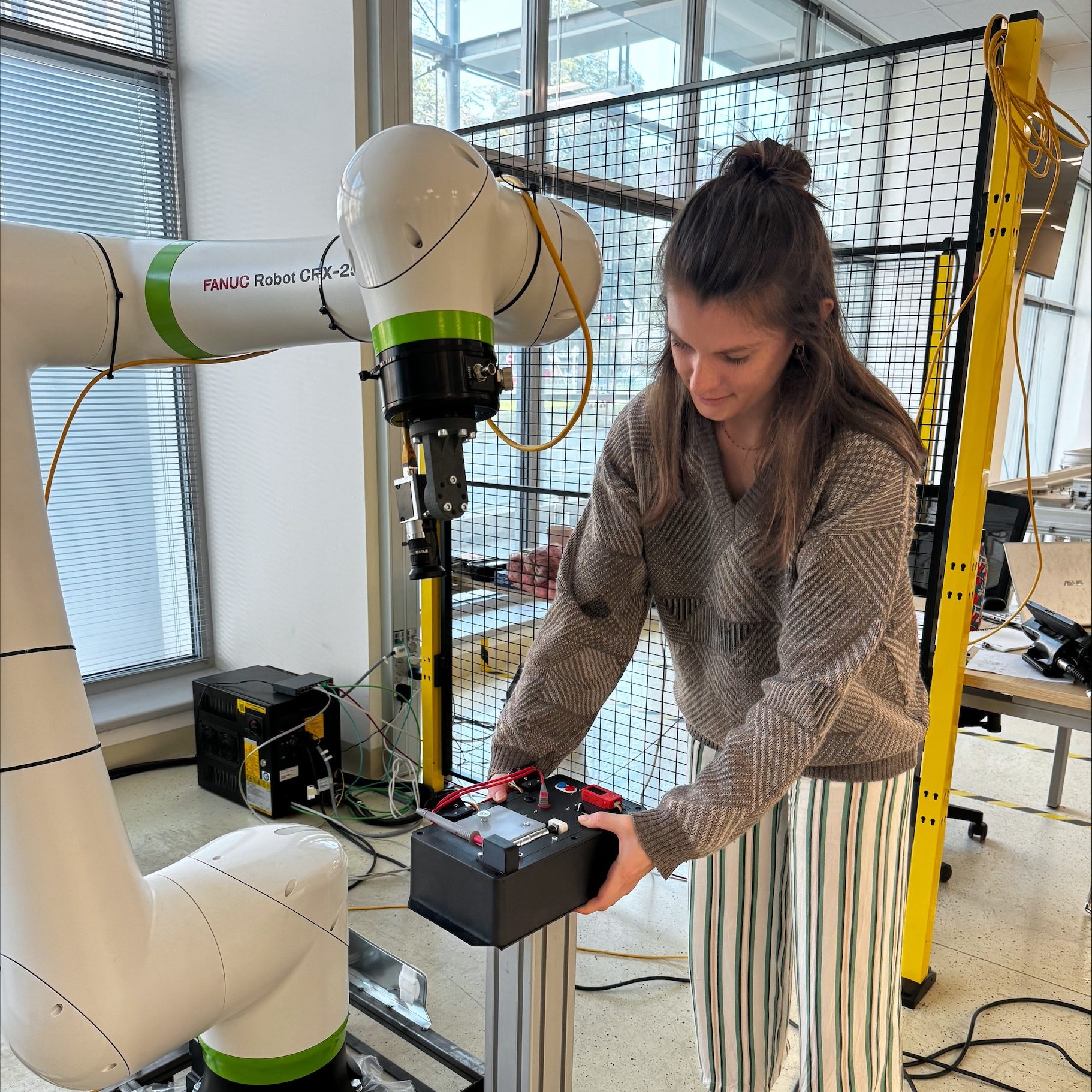Amélie Vogel and Camille Berta, final-year engineering students at SeaTech Toulon in France, specializing in Robotic and Mechatronic Systems, joined RICAIP Testbed Prague for an internship from April to August 2024. As part of Tomáš’ team, they worked on three diverse projects, gaining practical experience in advanced robotics and mechatronics. The internship was designed to offer them valuable hands-on learning while allowing them to contribute to ongoing research. It gave them a chance to put their skills into action and deepen their expertise in a real-world environment.
What Projects Did Our Interns Work On?
Augmented Reality Application for Robot Control
This project focused on creating an Augmented Reality (AR) application designed to interact seamlessly with robotic systems. The AR app was developed using the Unity platform, which allowed for deployment on devices such as the HoloLens 2. To facilitate communication between the AR app and the robotic systems, the interns utilized OPC UA (Open Platform Communications Unified Architecture), enabling real-time data exchange and control. The programming language C# was employed to implement the OPC UA communication within the AR application. Ultimately, the goal was to enhance the user experience by fostering immersive interactions with robotic systems through AR technology.
3D Object Recontruction Application with Collaborative Robot
In this project, various technologies were integrated to create a comprehensive robotic system for 3D object reconstruction. Robotics was combined with Computer Vision, where a camera was used to collect a series of photos that were then utilized for 3D object reconstruction. OPC UA was employed for seamless communication between different components, such as the robotic system and the computer vision module. Simulation tools were used to model and test the robotic system virtually before actual deployment. The project aimed to create a robust, intelligent robotic system that could be used for safe and fast object scanning.
Assistive Technology Robot
This project focused on developing assistive technology by integrating control systems, simulation, and CAD tools. Robotics was paired with control systems to ensure precise operation and functionality of the collaborative robot used for rehabilitation. Simulation tools were utilized to model the robotic systems and test their behavior in various scenarios. Post-processing involved analyzing the simulation output data (robotic program) and converting it into the Java programming language, which the collaborative robots used. CAD software was employed to design the physical components of the robot. The objective of this project was to create an efficient and safe robotic system to ease the workload of physiotherapists who would subsequently use this technology.

What Did Amélie and Camille Think About Their Time at RICAIP Testbed Prague?
How would you describe your experience living in Prague and working at CIIRC?
Our experience working with the team at RICAIP Testbed Prague was truly positive. We had the chance to engage in current projects while also launching two new initiatives, which helped us develop valuable skills. Beyond our project work, we participated in the SheCodes Meet-Up event and various social gatherings, which enriched our time here.

Did you accomplish the goals set for your internship? What are the next steps in your work?
Collaborating with the team at RICAIP Testbed Prague, each of us successfully completed our segments of the project. Their support in the early stages was invaluable in helping us design and implement effective solutions. The systems we developed are now ready for researchers to utilize in various ongoing projects and future publications, contributing to the advancement of our field.
Throughout the process, we were able to deepen our understanding of both theoretical concepts and practical applications, allowing us to tackle challenges with confidence. This collaboration fostered a rich learning environment where we could share ideas, experiment with new technologies, and refine our problem-solving skills.
Can you share the key milestones and biggest challenges you faced during your project?
Throughout our internship, we faced a variety of challenges as we acquainted ourselves with new technologies and programming languages. It was particularly enriching to work with cutting-edge tools, such as industrial robots, which we had not encountered before. This experience significantly enhanced our technical vocabulary in English, allowing us to communicate effectively within our international research team. Each challenge not only broadened our skill set but also deepened our appreciation for the innovative environment we were a part of, making the journey both exciting and rewarding.
What are the most valuable lessons you’ve gained from your time at CIIRC?
We found the integration of academic and industrial environments to be quite inspiring, bringing together students from bachelor’s, master’s, and doctoral programs. The connection between the industrial sector and healthcare was especially interesting. Both of us are keen to gain further experience at other international institutions, with Camille preparing to study in Montreal, Canada, during the upcoming semester. This internship also made Amélie consider the possibility of pursuing a PhD in the future.
We encourage others to consider reaching out to CIIRC for internship opportunities. This experience offers a valuable mix of practical and theoretical knowledge that is rare to find, and it could be a great fit for those looking to enhance their skills in a supportive environment.

